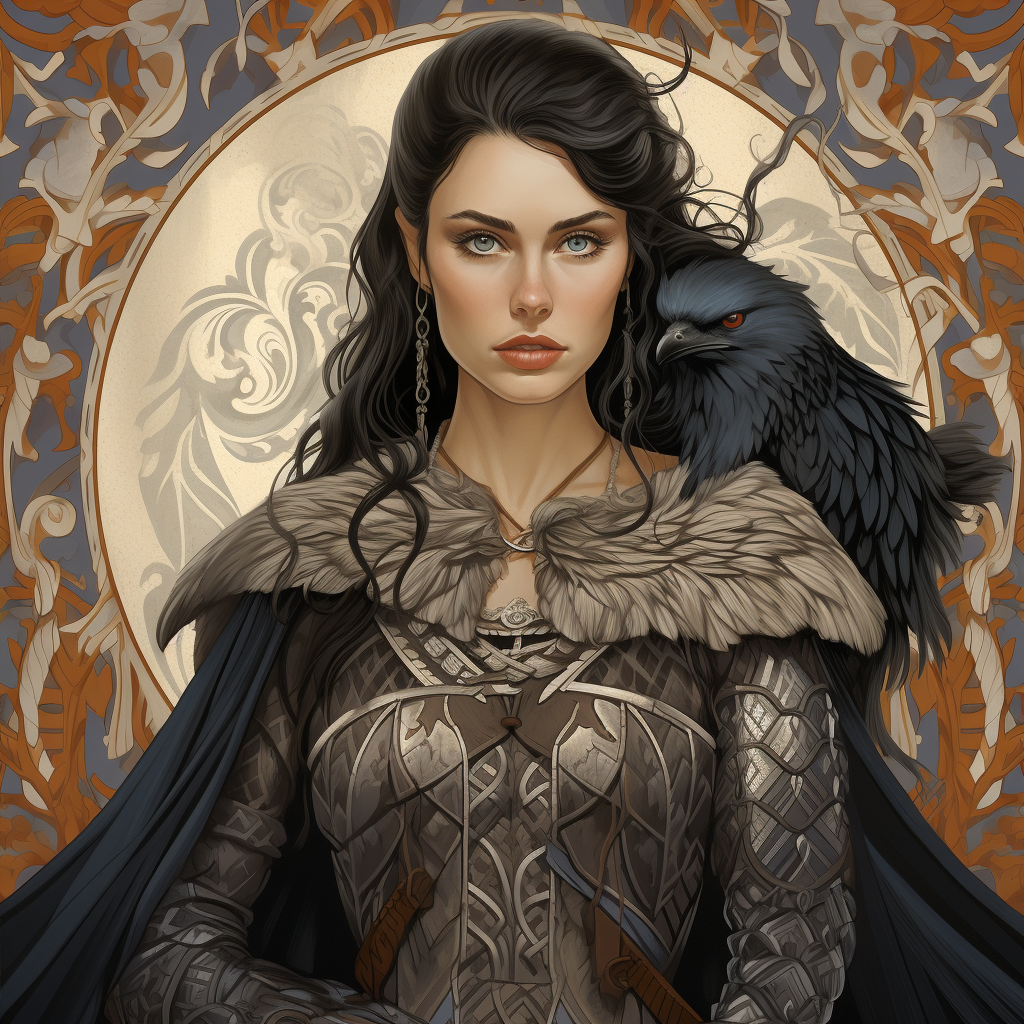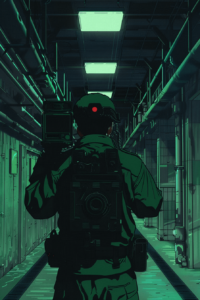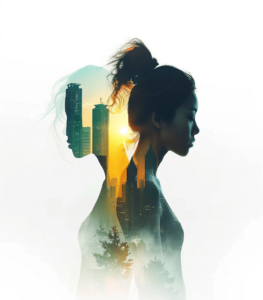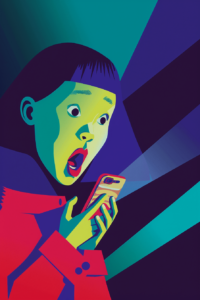In the ever-evolving landscape of technology, Artificial Intelligence (AI) stands out as a beacon of transformative potential. One of the most profound impacts of AI is on the realm of creativity. From reshaping brainstorming sessions to enhancing advertising strategies, AI is not just a tool but a collaborator in the creative process. Let’s delve into the multifaceted role of AI in the world of creativity.
The Transformation of Creativity
The digital age has brought with it an overwhelming influx of information and content. For creators, this often meant hours spent scrolling, searching, and sifting through existing works to find that spark of inspiration. However, the advent of generative AI has dramatically shifted this paradigm.
Generative AI, with its ability to produce content based on prompts, has become a game-changer for the creative process. Instead of being passive content consumers, creators can now actively engage with AI tools to instantly bring their visions to life. Imagine having a thought or concept and, instead of searching for references or similar works, simply inputting a prompt into an AI tool and watching your idea materialize.

This immediate visualization is not just about convenience; it’s about revolutionizing how we conceptualize and create. Once characterized by lengthy discussions and iterative processes, brainstorming sessions can now be more dynamic and results-driven. Storyboarding, a crucial step in many creative projects, can be expedited, allowing for more iterations and refinements in less time.
Moreover, this transformation extends beyond just visual arts. Writers, musicians, and other artists can harness the power of generative AI to explore new themes, melodies, and narratives. The boundaries of what’s possible are continually expanding, and the creative process is becoming more collaborative, with AI serving as a partner in innovation.
In essence, generative AI is a tool and catalyst, propelling creativity into uncharted territories and enabling artists to realize their visions quickly and precisely.
Advertising Enhancement
Advertising, as an industry, has always been at the forefront of embracing technological advancements. The introduction of AI into this space has not only streamlined processes but has also opened doors to innovative strategies that were previously unimaginable.
Breaking Language Barriers: In our globalized world, reaching a diverse audience is paramount for brands. Traditionally, adapting content for different regions involved a lengthy process of translation, cultural adaptation, and sometimes even complete re-creation. AI has transformed this. Advanced language models can now instantly translate and adapt content, ensuring that the core message remains intact while resonating with the target audience. This seamless transition across languages and cultures allows brands to maintain a consistent voice worldwide.
Rapid Content Iteration: Digital advertising thrives on A/B testing – the practice of comparing two versions of a webpage or app against each other to determine which one performs better. With AI, creating multiple variations of an advertisement, be it a video, image, or text, has become significantly more efficient. Brands can now produce and test various ad versions in real-time, allowing them to quickly identify and roll out the most effective content.
Personalization at Scale: One of the standout features of AI in advertising is its ability to personalize content for individual users. By analyzing user data, AI can predict what kind of content a specific user is likely to engage with. This means that two users might see different versions of the same ad, each tailored to their preferences and browsing history. Such a level of personalization was previously labor-intensive and costly but is now achievable at scale, leading to higher engagement rates.

Real-time Feedback and Adaptation: AI tools can analyze user engagement in real-time, providing invaluable feedback on how an advertisement is performing. If an ad isn’t resonating as expected, AI can suggest tweaks or adaptations, ensuring that campaigns remain agile and responsive to audience reactions.
In conclusion, AI’s role in advertising enhancement is multifaceted. It’s not just about making processes faster or more efficient; it’s about redefining how brands communicate, engage, and resonate with their audiences. The future of advertising is here, and it’s powered by Artificial Intelligence.
Creativity in Publishing and Design
The integration of AI into the realms of publishing and design has sparked intense debates and discussions. While some fear the potential overshadowing of human creativity, others see a world of possibilities. Let’s delve deeper into this transformative journey.
Human vs. Machine: The most prevalent concern is the potential for AI to replace human roles in creative sectors. However, it’s essential to understand the nature of generative AI. At its core, AI is a tool, albeit an advanced one. While it can generate content, the direction, depth, and essence of that content are often derived from human-provided prompts. The AI doesn’t “create” in the traditional sense; it executes based on the data it’s been trained on and the instructions it receives.
The Art of Prompting: A significant aspect of using generative AI effectively in publishing and design lies in the art of crafting prompts. A well-thought-out, detailed prompt can lead to outputs that are rich, nuanced, and aligned with the creator’s vision. Conversely, a vague or generic prompt might yield generic results. This highlights the indispensable role of human creativity. The more intricate and specific a prompt, the more evident the human touch in the final output.

Augmenting Human Capabilities: Instead of viewing AI as a competitor, it’s more productive to see it as an enhancer of human capabilities. For instance, designers can use AI tools to quickly generate multiple design variations, allowing them to focus on refining the best options. Similarly, writers can use AI to draft content, which they can then edit and polish, ensuring the final piece retains a unique human voice.
Collaborative Creation: The future of publishing and design might lie in a collaborative model where humans and AI work in tandem. Imagine a scenario where a designer sketches a rough idea, and AI tools refine it, offering multiple variations. Or a writer outlines a story, and AI helps flesh out the details. Such collaboration can lead to outputs that are beyond what either could achieve independently.
In essence, the intersection of AI with publishing and design isn’t about replacement but about evolution. It’s about harnessing the strengths of both humans and machines to push the boundaries of what’s creatively possible. The key is to strike a balance, ensuring that while we leverage AI’s capabilities, we never lose the essence of human creativity.
The Case for Co-generative AI
The narrative surrounding AI often oscillates between awe and apprehension. However, when it comes to creativity, there’s a compelling case to be made for a co-generative approach, where AI and humans collaborate to produce unparalleled results.
A Synergistic Partnership: At the heart of co-generative AI lies the idea of synergy. Instead of viewing AI as a mere tool or, at the other extreme, a potential replacement, we should see it as a partner. Just as musicians collaborate to produce richer compositions, humans and AI can work together to enhance creative outputs. Each brings unique strengths to the table: humans with their intuition, emotions, and experiences, and AI with its vast data-processing capabilities and consistency.
Knowledge Enrichment: To truly harness the potential of co-generative AI, there’s a need for continuous learning. As AI models evolve, understanding their capabilities and limitations becomes crucial. By investing in knowledge, creators can craft more effective prompts, guiding AI towards desired outcomes. This iterative learning process, where humans and AI learn from each other, can lead to groundbreaking innovations.
Navigating Ethical Considerations: Collaboration with AI also necessitates a keen understanding of ethical considerations. As AI-generated content becomes more prevalent, questions about originality, copyright, and authenticity will arise. By being proactive and establishing clear guidelines, creators can ensure that their collaborations with AI are both innovative and ethical.
In conclusion, the future of creativity lies not in choosing between humans and AI but in embracing the possibilities that arise when they collaborate. Co-generative AI offers a vision of the future where creativity is boundless, processes are efficient, and the fusion of human intuition with machine precision leads to a new era of innovation.
In Conclusion
The integration of AI into the creative landscape is not just a fleeting trend; it’s a seismic shift that’s redefining the boundaries of what’s possible. However, with great power comes great responsibility, and as we stand at this crossroads, it’s imperative to approach the future with both enthusiasm and caution.
The Double-Edged Sword of AI: While AI offers unparalleled advantages in terms of efficiency, cost-effectiveness, and innovation, it also presents challenges. The risk of homogenization, where AI-generated content starts to feel formulaic or lacks a distinct voice, is real. Moreover, as AI systems become more autonomous, there’s a potential for them to produce content that might inadvertently infringe on existing copyrights or blur the lines of originality.
The Essence of Inspiration: Throughout history, artists and creators have drawn inspiration from their predecessors. This cycle of inspiration, where ideas are borrowed, transformed, and built upon, is the bedrock of creativity. In this context, AI can be seen as another source of inspiration. However, it’s essential to differentiate between drawing inspiration and outright replication. Just as artists respect the works of those who came before them, the same ethos should apply to AI-generated content.

The Human Touch: Amidst all the technological advancements, it’s crucial to remember the irreplaceable value of human intuition, emotion, and experience. AI can be a collaborator, a tool, even a muse, but it cannot replicate the depth of human emotion or the nuances of personal experiences. The future of creativity will be most vibrant when it’s a harmonious blend of human ingenuity and AI’s capabilities.
In wrapping up, the journey of AI and creativity is just beginning. As we navigate this uncharted territory, our guiding principles should be respect, collaboration, and a relentless pursuit of innovation. The canvas is vast, and together, humans and AI can paint a masterpiece for the ages.





